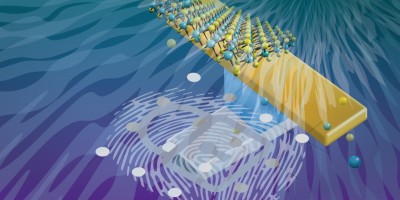Environmentally benign and sustainable chemistry has the potential to address negative environmental impacts associated with the production and degradation of synthetic polymers. In particular, green synthesis of plastics could be achieved by the convergence of visible-light-driven photocatalysis and reversible-deactivation radical polymerization.
References
Rahimi, A. & García, J. M. Chemical recycling of waste plastics for new materials production. Nat. Rev. Chem. 1, 0046 (2017).
Ciamician, G. The photochemistry of the future. Science 36, 385–394 (1912).
Corrigan, N. et al. Reversible-deactivation radical polymerization (controlled/living radical polymerization): from discovery to materials design and applications. Prog. Polym. Sci. 111, 101311 (2020).
Fors, B. P. & Hawker, C. J. Control of a living radical polymerization of methacrylates by light. Angew. Chem. Int. Ed. 51, 8850–8853 (2012).
Xu, J., Jung, K., Atme, A., Shanmugam, S. & Boyer, C. A robust and versatile photoinduced living polymerization of conjugated and unconjugated monomers and its oxygen tolerance. J. Am. Chem. Soc. 136, 5508–5519 (2014).
Lee, Y. & Kwon, M. S. Emerging organic photoredox catalysts for organic transformations. Eur. J. Org. Chem. 38, 6028–6043 (2020).
Yeow, J., Chapman, R., Gormley, A. J. & Boyer, C. Up in the air: oxygen tolerance in controlled/living radical polymerization. Chem. Soc. Rev. 47, 4357–4387 (2018).
Gormley, A. J. & Webb, M. A. Machine learning in combinatorial polymer chemistry. Nat. Rev. Mater. 6, 642–644 (2021).
Singh, V. K. et al. Highly efficient organic photocatalysts discovered via a computer-aided-design strategy for visible-light-driven atom transfer radical polymerization. Nat. Catal. 1, 794–804 (2018).
Nguyen, S. T., McLoughlin, E. A., Cox, J. H., Fors, B. P. & Knowles, R. R. Depolymerization of hydroxylated polymers via light-driven C–C bond cleavage. J. Am. Chem. Soc. 143, 12268–12277 (2021).
Acknowledgements
This work was supported by the Basic Science Research Program through the National Research Foundation of Korea (NRF) funded by the Ministry of Education (2019R1I1A2A01059288).
Author information
Authors and Affiliations
Corresponding authors
Ethics declarations
Competing interests
The authors declare no competing interests.
Rights and permissions
About this article
Cite this article
Lee, Y., Boyer, C. & Kwon, M.S. Visible-light-driven polymerization towards the green synthesis of plastics. Nat Rev Mater 7, 74–75 (2022). https://doi.org/10.1038/s41578-021-00409-6
Published:
Issue Date:
DOI: https://doi.org/10.1038/s41578-021-00409-6
- Springer Nature Limited
This article is cited by
-
Controlled radical copolymerization of fluoroalkenes by using light-driven redox-relay catalysis
Nature Synthesis (2023)
-
Conjugated cross-linked phosphine as broadband light or sunlight-driven photocatalyst for large-scale atom transfer radical polymerization
Nature Communications (2023)
-
Formation and degradation of strongly reducing cyanoarene-based radical anions towards efficient radical anion-mediated photoredox catalysis
Nature Communications (2023)
-
Anti-polyelectrolyte Zwitterionic Block Copolymers as Adaptable Uranium Harvester in High-Salinity Environments: Catalyst-Free Light-Driven Polymerization and Conformational Dynamics Study
Advanced Fiber Materials (2023)


